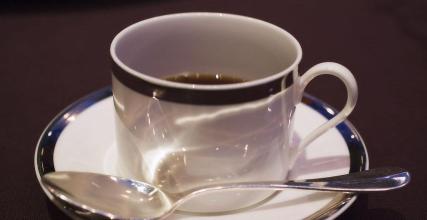French coffee culture introduces the practice of French coffee
I heard that France once drank less coffee because of a shortage of coffee, and immediately saw more people napping. It sounds like an exaggeration, but it's true that the French love coffee. When the Gulf War broke out in 1991, France was also one of the participating countries. Some people in China worried that the war would affect the supply of daily necessities and rushed to supermarkets to buy them. Even the TV station was alarmed. When the camera was aimed at customers who were full of "scarce materials", they found that they took the most coffee and sugar. This became a big joke at the time.
French coffee does not seem to pay attention to taste, but the environment and atmosphere, most do not want to close the door "drink alone," but to join in the fun outside, even if the price of a small cup is enough to cook a pot at home. They did not drink it in a hurry, but slowly tasted it, carefully tasted it, read books and newspapers, and talked loudly. One "bubble" lasted for most of the day. At the Science and Technology Expo, I walked through six or seven large exhibition halls, and I saw coffee seats in the corners, which were convenient for people from all walks of life to exchange and negotiate. The seats were packed all day.
French people develop this habit of drinking coffee, consciously or unconsciously expressing an elegant flavor, a romantic atmosphere, a comfortable feeling of enjoying life. It can be said that this is a traditional coffee culture. Because of this, France let people rest and drink coffee places can be said to be all over the streets, under the shade, by the road, square side, river bank, as well as cruise ships, street balcony, even the Eiffel Tower... And the form, style, size eclectic, there are cafes, restaurants, halls, rooms, these are attached to the building and exist, there are roofs covered. And the most popular, full of romantic atmosphere, or those outdoor cafes, which is almost a portrayal of French life. Many cafés occupy public places, such as the square, the sidewalk, even on the busy Avenue de Champs-Élysées, where colorful umbrellas dot the streets of Paris, and the city authorities seem to be particularly tolerant of this. Almost all the chairs in the cafe are arranged facing the road, which is obviously a deliberate audience, and the road in front of it is the big stage where the play never repeats. Look at all kinds of guests, let the street noise, traffic, sun umbrella under a cup in hand, leisurely. Read the local newspaper aimlessly, smoke a cigarette, and admire the splendour of the street. Here, there will be bright fashion flash, there will be intoxicating fragrance floating, there will also be Jiona colorful girl passed, but also often street musicians to send you a wonderful melody. This scene was intoxicating. It is not difficult to see the seat of the original whisper lovers hug, kiss, others can really envy not so much, because this is in France. If you are lucky, you may also have a French beauty sitting in the chair beside you, which will give you a lot of visual enjoyment. Here, Parisian girls sipping coffee and reading fashion magazines are seen as fashionable symbols.
In addition to those open-air cafes that look up to the sky, there are about 170,000 cafes in France, and there are no lack of grandeur or simplicity. Especially in Paris, some cafes are historical and legendary places in themselves. During the Old Dynasty, the centre of cultural life in France was at court. In the 18th century, during the Age of Enlightenment, the cultural center of gravity began to shift to salons, clubs, and cafes. Café Le ProcoPe in the Latin Quarter, for example, is associated with the French Revolution, which affected the whole world more than two hundred years ago. Voltaire, Rousseau and Diderot, thinkers of the 18th century European Enlightenment, as well as Robespierre, Danton and Marat, the three heroes of the Great Revolution, are frequent visitors here. In those years, Voltaire's several works, Diderot's world's first encyclopedia, etc. were written here, and the red, white and blue tricolor hat symbolized by the Great Revolution also appeared here for the first time. In the years leading up to the revolution, it had been a hot-blooded, stormy place. It is said that Napoleon came here before his fortune, and left his military hat because of his coffee debt. Later, it was also a social place for first-class writers, actors, gentlemen and ladies to gather and talk, among which there were famous Hugo, Balzac, George Sang, Zola, etc., and even later founded the literary journal Prokop under the name of this cafe. Therefore, the traditional decorations, antique furnishings and various cultural relics preserved in the museum are particularly rich. The layout and scenery in the museum do not seem to have been "renewed" due to the changes of times. Customers still like its classical style.

Important Notice :
前街咖啡 FrontStreet Coffee has moved to new addredd:
FrontStreet Coffee Address: 315,Donghua East Road,GuangZhou
Tel:020 38364473
- Prev

Strong-flavored mantenin espresso in Lindong producing area
Manning coffee is produced in Sumatra, Indonesia, Asia, also known as Sumatran coffee. The main producing areas are Java, Sulawesi and Sumatra, 90% of which are Robusta species. Among them, the "Mantelin" produced in Sumatra is the most famous. The best of the exquisite traditional Arabica coffee produced in northern Sumatra of Sumatra is called Lindong Lintong and Mann.
- Next

Yunnan small Coffee, known as "fragrant Coffee", introduces the characteristics of Alpine Arabica Coffee producing areas in Yunnan, China
Coffee is a kind of beverage crop with high economic value, which is called the three largest beverages in the world together with cocoa and tea, and its output and consumption ranks first among the three beverages. Coffee is rich in protein, fat, sucrose, starch, glucose, caffeine and other substances, rich aroma and delicious taste. Coffee belongs to the family Rubiaceae.
Related
- What documents do you need to go through to open a coffee shop? coffee shop coffee shop certificate processing process
- How to purchase Coffee beans in small Cafe how to choose a suitable supplier for domestic Coffee supply Company
- How to drink Starbucks Fragrance White Coffee? how to make Australian White Coffee? what Italian coffee beans are recommended?
- The Story of Flora Coffee: the name of Flora Coffee Bean and the implication of the Flowers on Florna Coffee
- How much does a cup of coffee cost? How much is the profit of a cup of coffee? What is the profit of the coffee shop in a year?
- Yunnan small Coffee, known as "fragrant Coffee", introduces the characteristics of Alpine Arabica Coffee producing areas in Yunnan, China
- 2023 latest Starbucks full menu price list how much is a cup of Starbucks coffee what is better to drink the most popular hot and cold drinks recommended
- Starbucks different kinds of Coffee Price list Starbucks menu 2023 Top Ten Best drinks in Starbucks
- Starbucks Spring praise Comprehensive matching Coffee Bean theme Story Packaging implication and taste description
- The cost of a cup of coffee latte American coffee cost price and selling price

